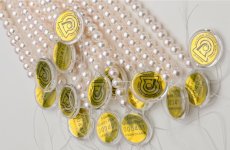jshepherd
Pearl Paradise
- Joined
- Jun 22, 2004
- Messages
- 6,357
I saw this debut at the Hong Kong show and Jewellery News Asia just put the story out.
The marketing material that I picked up in Hong Kong explained it a bit further and also touched on the "blue" tag and how it differed.
JNA
Japan has long been recognized as the world's premier trading and distribution hub for pearls and it is determined to maintain this status by implementing new programmes.
One of which is the Japan Quality Pearl Label, which was introduced at the September Hong Kong Jewellery & Gem Faire. It is a voluntary programme that guarantees the quality of marine cultured pearls, Yoshihiro Shimizu, chairman of the Japan Pearl Exporters' Association (JPEA) and chairman of Kobe-based Hosei Co Ltd, explained.
Pearls for export and voluntarily submitted to the JPEA for exaluation and are subjected to a series of inspections. The JPEA defines the recommended quality standards and if the pearls will be issued a Japan Quality Pearl Label.
"This 'Gold Tag' label assures that the pearl meets the high quality standards defined by the JPEA. The pearls are evaluated based on their cultivation, lustre, necklace-making potential and degree of spots. The tags have serial numbers so each lot could be traced to its source," Mr Shimizu said.
"It is our responsibility to ensure that the Japanese pearl industry supplies only the best quality pearls," he continued, adding that 10 companies introduced the programme at the September Hong Kong Fair. The association, together with the Japan Pearl Promotion Society, will also introduce its quality pearl label programme at the China International Gold, Jewellery & Gem Fair in November.
The marketing material that I picked up in Hong Kong explained it a bit further and also touched on the "blue" tag and how it differed.
From the JPEA
Please be noted that the existing "Blue Tag" stands for minimal acceptable quality for cultured pearls. It is not a seal of exact quality but a seal of acceptability. However, it does not necessarily mean that the pearls affixed with a Blue tag but no Gold tag is of inferior quality.

